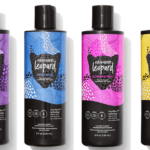There is a wide array of Indian skin tones ranging from dark brown to wheatish. With such a range, it can be hard to describe Indian skin tone. What is Indian skin tone?
The most common skin tone of Indian people is gold-yellowish. This skin tone is sometimes called wheatish because it is similar to wheat in color. The color of wheat ranges from yellow to light brown. Many Indians have a darker skin tone, and many have a lighter skin tone.
Indian skin tans easily. It doesn’t burn easily. It is also generally thicker than the skin of many other ethnicities.
Using the Fitzpatrick Skin Tone Scale, shown below, Indian skin tone generally falls within the range of III to VI, which means from yellowish-gold to dark. However, many Indians have a lighter or darker skin tone.
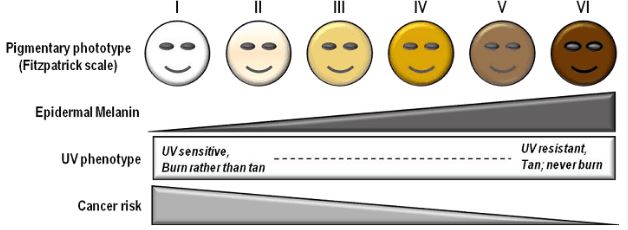
Read on to learn more about Indian skin tone, its different hues, the recommended makeup, and how to care for it.
Indian Skin Tone
Indian’s general skin undertone is similar to the color of wheat, which is gold-yellowish. Grains of wheat usually manifest colors ranging from yellow to light brown. This skin tone will not easily get sunburned – instead, it tans easily.
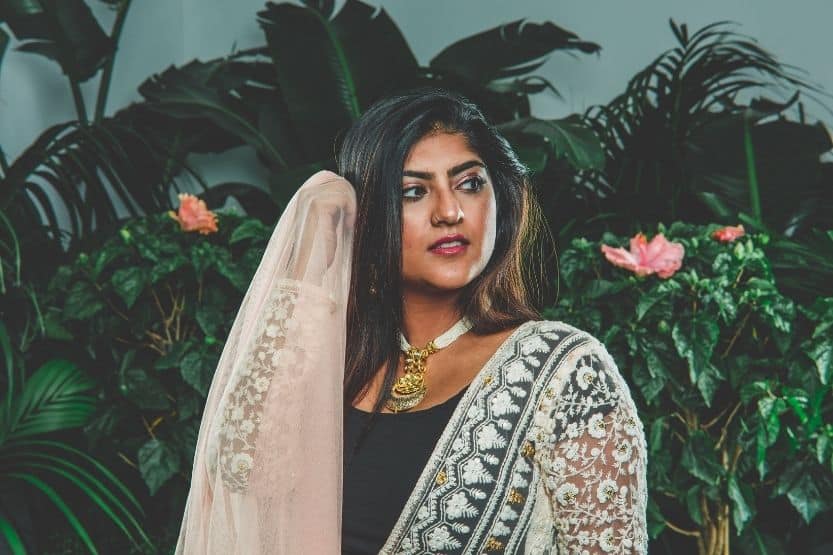
Indian skin tone is often defined as having a wheatish complexion, meaning it has a light brown complexion that is similar to the color of wheat. It is darker than fair or peach but is lighter than dusk. The exact hue is determined by the amount of melanin in the skin.
Higher melanin means darker skin and vice versa. This explains the varying hues of the skin tone of the people in India. Your genes play a major role in determining your skin tone. If either of your parents is of wheatish skin tone, you have a greater chance of having it too.
There are two primary reasons why the majority of Indians have wheatish complexions: Human genetics and evolution – the dominant skin tone globally is largely determined by genetics and human evolutions. Exposure to UVB sun rays – studies have suggested that people who live close to the equator have relatively darker skin than those living far from the equator.
This explains why Indians from Southern India are generally darker than those from Northern India. Indians living in the North are farther away from the equator than those in the South, so Northern Indians have a lighter skin tone.
For an Indian skin tone chart, you could look at the Fitzpatrick skin tone chart. In the Fitzpatrick skin tone classification of I to VI, with I as lightest and VI as darkest, Indian skin tone falls within the range of III to VI.
That means this skin tone ranges from yellow or light brown to dark. Those in Northern India have lighter skin. Those in Southern India have darker skin.

Different Types of Indian Skin Tones

Contrary to the most common knowledge going around the world, dark or dark brown is not the color of India’s people. There are many skin colors in this country. These colors range from:
- Very fair – which is found in natives in the northern parts such as Kashmir and the North East
- Fair – this is present in the natives of East, West, and Central parts of the country like West Bengal, MP, Panjab UP, and Maharastra.
- Dark to darker is found in India’s southern parts, namely Andhra Pradesh, Telangana, and Karnataka.
- Very dark to darkest – this is present in the southernmost parts of the country, such as the Entire Tamilnadu. These people mostly have yellow skin undertones.
There are other aspects or features that you can use to classify the Indian skin color and tone:
- Those who belong to the upper castes generally have more Caucasian and Mongolian features with white to yellow skin tones.
- White skin tones are found in both north and south upper-caste families. This skin tone is predominant in the northwestern regions and reaches up to the upper castes of Uttarakhand, Himachal, Punjabi J n K, and NCR.
- Yellowish or olive skin tones are present in Northeast Laddakh.
- Light to dark brown skin tones is found in the Kol tribes, especially the aboriginal type.
- Dusky to dark skin tones are present in the lower castes with proto Indian facial features.
- Dark skin tone is found in the Indo Australoid tribes in Central East India along with Australoid faces.
- Cream skin colors are present in Kashmir and Jammu, where most people have brown colors. The specific hue depends on the region and the temperature of the place.
These different varying skin tones underline the fact that Indians are not just dark-skinned people. There are varying degrees or hues of the wheatish skin tone in India. That being said, most Indian people’s skin tone is predominantly golden or almond.
Below is an Indian skin color chart, or skin tone chart, showing the various undertones for Indian skin. There is a wide range from porcelain to sand, golden to espresso:
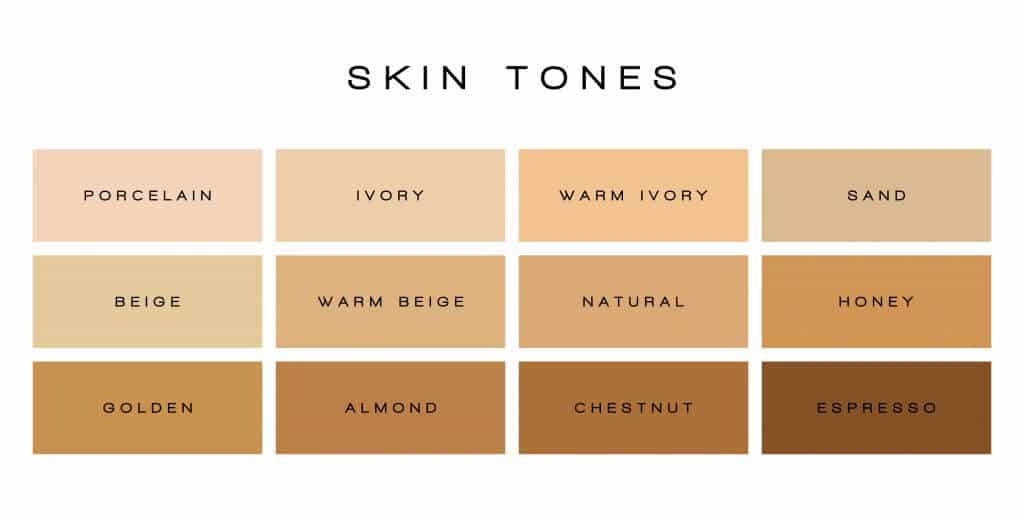
Celebrity Examples with Indian Skin Color
To help you picture Indian skin tones better, look at the different skin tones in some of today’s popular Indian celebrities.
1. Vaani Kapoor

Vaani Kapoor is a beautiful and fair-skinned Indian actress who has starred in many Hindi films.
2. Akshay Mhatre

Akshay Mhatre is an Indian singer-composer, actor, and live performer.
3. Sunny Leone
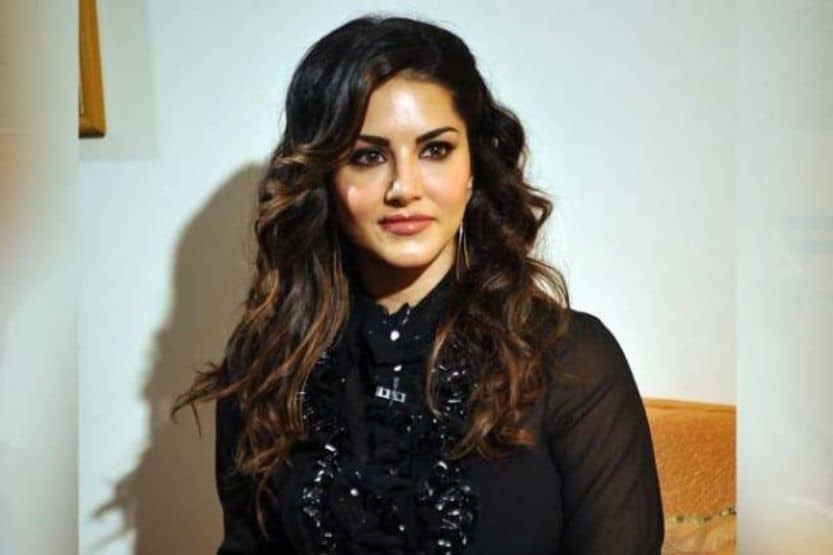
Sunny Leone is an Indian actress born in Canada who also appeared in many American and Hindi films. Sunny has a lighter Indian skin tone.
4. Akshara Gowda
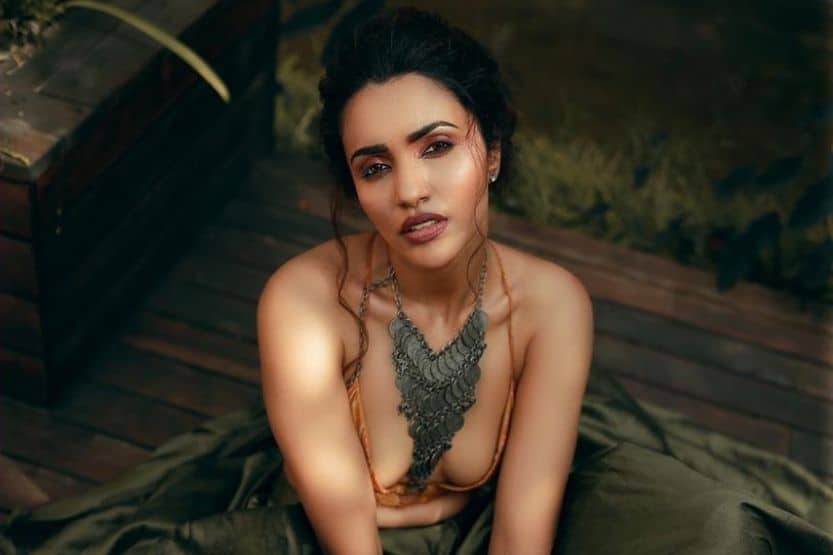
Another Indian actress who appeared in several Hindi, Tamil, and Kannada films is Akshara Gowda. Akshara’s Indian skin tone can be described as golden-almond.
The Best Foundation and Makeup for Indian Skin Tone
You can’t just use any makeup. The makeup you need to wear should be specifically designed for your skin tone.
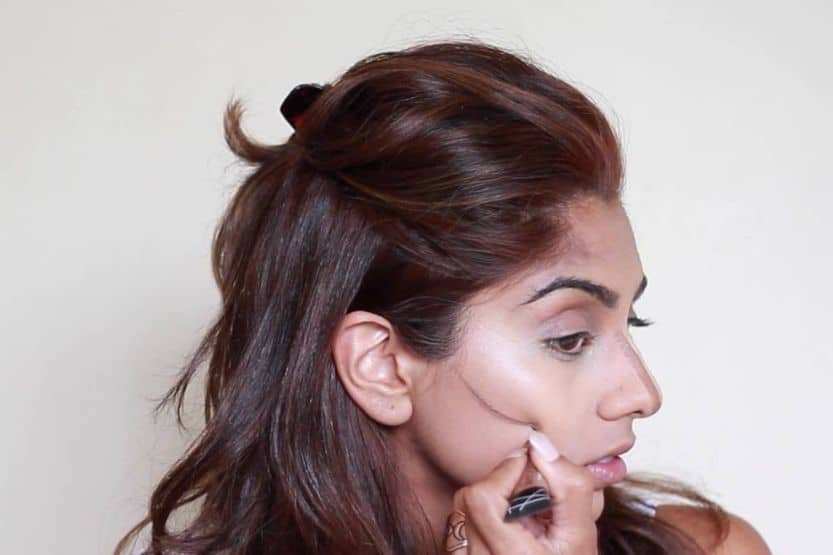
For your Indian skin color or wheatish complexion, here are the makeup tips that you need to follow:
Recommended Makeup Routine
1. Use Water-Based Foundation
If you’re a typical Indian woman, your skin will be relatively oily. That’s only natural since you live in a high humidity country. The best foundation for Indian skin tone should be water-based. If you use cream-based foundations, your face will appear greasy.
2. Use Makeup with Warmer Tones
Your skin will look better with subtle, gold hues. For eye shadows, use nudes, golden or brown shade.
Use brown or golden eyeliners. You can also use blue and green.
3. Use a Concealer to Hide Sun Spots
If there are spots of pigmentation on your face, cover them with a concealer. To be effective, you should choose a concealer that is one or two shades darker than your skin tone. Apply the right amount on the dark spots enough to hide them.
4. Use Lipstick with Subtle and Warm Shades
The best lipstick colors for your wheatish complexion are nude, wine, and maroon.
5. Don’t Over Blush
Wearing blush is ok but just don’t overdo it.
Makeup and Foundation to Avoid for Indian Skin Tone
- Don’t wear a foundation that looks whiter than your skin complexion – if you do, it will make your face appear patchy, uneven, and powdery. You need to make your face look healthy and radiant. Don’t hide your wheatish skin but be proud of it.
- Don’t wear blushes with light colors – applying bright colored blushes will make your face look unnatural. Use a blush that will accentuate, not hide your skin complexion.
- Don’t use bright-colored lipstick – the colors you should avoid are bright red, pink, orange, and similar shades.
- Don’t wear silver eye shadow and highlighters – bright and cool shades you need to avoid are light purple, silver, and pink. Eye-liners of neon colors must also be avoided. Stick to brown, copper, or gold. They go well with a wheatish skin tone.
- Don’t forget your neck – you should also wear makeup on your neck. Don’t make the mistake of not applying color to your neck. But the color must be the same as the color that you used on your face.
What does a typical Indian skin tone look like? Indians usually have a gold-yellowish skin color. And this color is also typically described as wheatish since it ranges from yellow to light brown. And lastly, this skin tone sunburns easily.
The Best Hair Color for Indian Skin Tone (and Clothing Colors)
The idea of combining colors is to accentuate your base color with the addendum color so that the base color will be accentuated. In that context, your choice of color shades should contrast with the color of your skin. That goes for the clothes and hair color for Indian skin tone.
Good clothing colors for Indian skin color are middle ground pastels, blues, pinks, and reds. Don’t choose clothes of light browns or pastels because they are close to your skin color. The best color that will accentuate your skin tone is white.
This is a general color guideline that has developed over the years. It is not the gospel truth, but it has been made with a lot of sense. Contrast is the main key when choosing the right clothes and hair color with the skin tone. Personal comfort should also be one of your concerns.
What is the best hair color for Indian skin tone? Brown or burgundy is the best shade of color for people with Indian skin tones. Shades of burgundy and brown or highlights of red fall are natural colors that work well with Indian skin tones.
The best hair colors for Indian skin tones are colors that match or complement the skin color. For example, if you have a pale, wheatish Indian skin tone, stay away from all ash browns and gold hair shades.
Skin Care for Indian Skin Tones
Pollution, excessive heat, UV rays, and high humidity are just some of the things that assault the skin.
Follow these tips if you want to maintain the vibrancy of your wheatish Indian skin complexion:
1. Use Sunscreen
Wearing sunscreen is the most effective skincare that you can provide your skin. Even if you are using an umbrella or a hat when you are going out, you should still wear sunscreen protection.

You should apply sunscreen not only on your face but on your neck, shoulders, arms, and other parts of your body that will be exposed to the sun’s rays every time you are going outdoors.
2. Use Skin Products That Are Specifically Designed for Your Skin
To ensure that the skin care products you use will enhance and not damage your skin, be sure to buy only those made for your skin type, whether it is normal, oily, dry, or a cross between dry and oily. Buy only quality products to protect the health of your skin.
3. Eat a Healthy Diet
You are what you eat. And you can help your body attain things that it isn’t naturally endowed with. For instance, if your skin is dry, eat foods that will hydrate it. If your skin is oily, refrain from eating foods that induce your body to excrete more oil.
4. Exfoliate
The typical Indian skin is more oily than dry, so exfoliation is necessary. Use a face cleanser that contains exfoliating agents.
5. Moisturize with SPF
Since your skin can tan easily, ensure that it is always hydrated. Using a moisturizer with SPF every day will hydrate your skin. Choose a moisturizer that offers the highest SPF for better results.
6. Try the Lemon Juice and Honey Treatment
If your skin is particularly oily, you can try the lemon juice and honey treatment. Combine these two substances and apply the mixture to your face as a face mask. This trick will make your skin glowing and healthy.
7. Clean Your Face Twice a Day
Wash your face twice a day. One of them should be before going to bed. This will remove all the dirt and pollutants that have accumulated on your face throughout the day.
8. Don’t Use Face Cleansers That Are Abrasive
Stick with cleansers that contain natural ingredients that won’t harm your skin. Cleansers that contain chemicals are mostly abrasive, and they will leave your skin looking unhealthy over time.
Conclusion: Indian Skin Tone
People in India have a general skin tone that is gold-yellowish. This skin tone is described as wheatish because it is very similar to the color of wheat.
The color of wheat grains usually ranges from yellow to light brown. It is a type of skin tone that does not easily get sunburned. Indian skin tone does tan easily.
On the Fitzpatrick scale, it is within the III to VI range, which corresponds to yellowish-gold to dark.
Like other skin tones, you can take care of your Indian skin tone by eating a healthy diet and using skincare products, depending on your skin type.
Related reading:
What is Peach Skin Tone? (With Pictures)
What Is Warm Skin Tone? (With Pictures)
What is Mediterranean Skin Tone? (with Pictures)

![Neutral Skin Tone Defined [and Best Colors for Neutral Skin] neutral skin tone](https://skincaregeeks.com/wp-content/uploads/2021/05/neutral-skin-tone-150x150.png)
![Golden Brown Skin Tone - What Is It? [With Pictures] golden brown skin](https://skincaregeeks.com/wp-content/uploads/2021/04/golden-brown-skin-150x150.jpg)
![Shades of Brown Skin [20 Common Brown Shades with Chart] shades of brown skin tone](https://skincaregeeks.com/wp-content/uploads/2021/05/shades-of-brown-skin-tone-150x150.jpg)

